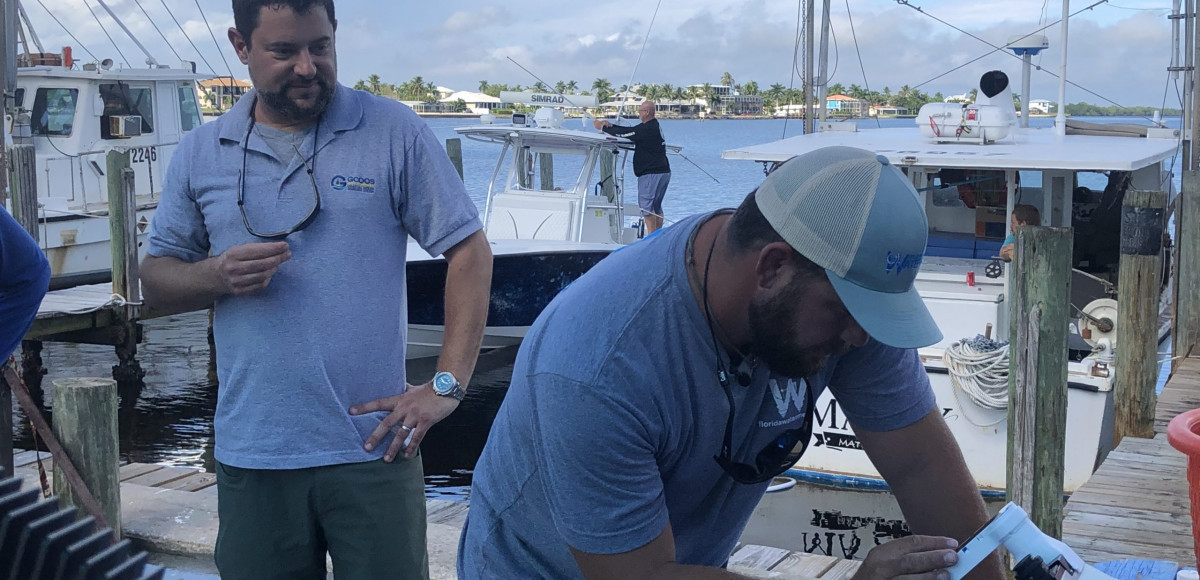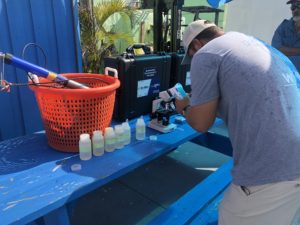
Commercial fishermen in Southwest Florida are donating their time & vessels to support a better scientific understanding of offshore waters
In 2018, as blooms of toxic red tide and blue-green algae took over Southwest Florida waters, Commercial Fisherman Casey Streeter, of Pine Island, Florida, knew he had to do something about the problems impacting his family’s commercial fishing and fish market businesses.
The result was the creation of the Florida Commercial Watermen’s Conservation (FCWC). This new nonprofit, science-based organization is bringing together commercial fishers to work with federal and state scientists to collect water quality data from offshore Florida waters from Venice to Marco Island for red tide and other water quality indicators.
“We really saw a need to help scientists expand their ability to gather information about what’s happening in our oceans,” said Streeter, who also owns Island Seafood Market in Matlacha. “We’re on the water all the time and if we can provide data that gives them a better picture of what’s happening in our oceans then we want to help. Our livelihood depends on having healthy oceans and real-time testing can lead to science-driven solutions that heal our waters and protect our way of life.”
The data the commercial fishermen collect is provided to scientists to help them gain a better understanding of the causes and effects of red tides and hypoxic and anoxic water conditions (low or no dissolved oxygen). Red tides and hypoxic events can cause severe fish kills that are detrimental to commercial and recreational fisheries.
The data FCWC collects is sent to NOAA’s Atlantic Oceanographic and Meteorological Laboratory, Ocean Chemistry and Ecosystems Division and is also shared with Florida’s Fish and Wildlife Conservation Commission and GCOOS.
FCWC was able to purchase some of the water testing equipment thanks to generous donations made by Pine Island residents. The sondes FCWC purchased look at levels of dissolved oxygen, salinity, temperature and other water quality parameters. GCOOS provided another piece of equipment, called a HABscope.
GCOOS is nonprofit organization that develops a network to combine ocean and coastal data to provide timely information about oceans for the public, resource managers and forecasters predicting ocean weather. HABscope, developed through a partnership between GCOOS and the National Oceanic and Atmospheric Administration (NOAA), is a portable microscope system that uses video and artificial intelligence (AI) to quickly analyze water samples for near real-time cell counts of Karenia brevis. To develop HABscope, researchers took a low cost, classroom-grade, portable microscope, outfitted it with a special adaptor — designed by the team’s engineer and printed on a 3D printer — then used that piece to mount an Apple iPOD touch to the eyepiece of the microscope. A portable power pack provides the power to light the microscope.
Now, the scopes are being used to provide a real-time look at whether there is red tide in water samples and at what level.
HABscopes are also being used on Sanibel Island to provide a real-time Red Tide Respiratory Forecast — online at habscope.gcoos.org/forecasts. The goal is to get HABscopes in the hands of those who can help expand the Respiratory forecast, as well as citizen science groups like FCWC. “Scientists can’t be in all places at all times gathering all the information,” said GCOOS Executive Director Dr. Barbara Kirkpatrick. “By developing tools like HABscope that citizen scientists can use, we’re able to exponentially increase the amount of information we can collect, which will lead to a better understanding of the things impacting our oceans. Then society can act to make changes.”
- Learn more about FCWC and donate to the organization online at floridawatermen.org.















